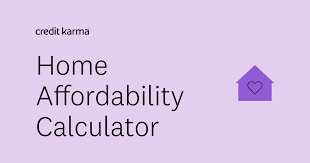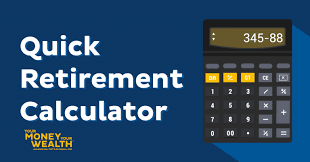Embark on your home-buying journey with confidence by leveraging the power of the Home Loan Affordability Calculator (Affordability Calculator Home Loan). This essential tool will help you determine your borrowing power, find the perfect property price range, and compare various loan scenarios. Discover how this Affordability Calculator House can simplify your path to homeownership and make your dream home a reality!This calculator used to estimate house affordability based on monthly allocations of a fixed amount for housing costs.
House Affordability Calculator
How much home can I afford?
When it comes to buying a home, one of the most important questions you should ask yourself is, "How much home can I afford?" Determining how much you can afford to spend on a house can help you avoid financial stress and make the home buying process much smoother. In this article, we'll discuss the factors that impact home affordability and how you can calculate your home affordability.
How to calculate your house affordability?
To determine how much home you can afford, there are a few steps you should take:
Calculate Your Monthly Income: To calculate your monthly income, add up all of your sources of income, including your salary, bonuses, and any other income streams you may have.
Calculate Your Monthly Debt: To calculate your monthly debt, add up all of your monthly debt payments, including credit card payments, car payments, and any other loans you may have.
Determine Your Debt-to-Income Ratio (DTI): To determine your DTI, divide your monthly debt by your monthly income. For example, if your monthly debt is $2,000 and your monthly income is $6,000, your DTI would be 33%.
Calculate Your Maximum Monthly Payment
To calculate your maximum monthly payment, you'll need to consider a few factors, including your monthly income, debt-to-income ratio, and down payment. The general rule of thumb is that your monthly mortgage payment should not exceed 28% of your monthly income. However, this can vary depending on your individual financial situation.
To calculate your maximum monthly payment, multiply your monthly income by 0.28. For example, if your monthly income is $5,000, your maximum monthly payment would be $1,400.
Next, subtract your monthly debt payments from your maximum monthly payment. For example, if your maximum monthly payment is $1,400 and your monthly debt payments are $500, your maximum monthly mortgage payment would be $900.
Finally, subtract your estimated monthly property taxes and insurance from your maximum monthly mortgage payment to determine the maximum amount you can afford to pay towards your principal and interest.
Use a Home Affordability Calculator: There are many home affordability calculators available online that can help you determine how much home you can afford based on your income, down payment, and other factors. These calculators can also help you estimate your monthly mortgage payments.
Tips for Improving Your Home Affordability
If you find that you can't afford as much home as you would like, there are a few things you can do to improve your home affordability:
Increase Your Income: Increasing your income can help you qualify for a larger mortgage. Consider taking on a side job or asking for a raise at work.
Save for a Larger Down Payment: Saving for a larger down payment can help you qualify for a lower interest rate and reduce your monthly mortgage payments.
Improve Your Credit Score: Improving your credit score can help you qualify for lower interest rates, which can lower your monthly payments.
Consider a Fixer-Upper: Consider buying a fixer-upper that needs some work. These homes are often priced lower than move-in ready homes and can be a great way to get into a larger home for less money.
Which factors affect your Home Loan Affordability?
Key factors that can affect your home loan affordability.
- Income and Employment Status
Your income and employment status are the most important factors when it comes to determining your home loan affordability. Lenders want to see that you have a stable income and that it’s sufficient to cover your monthly mortgage payments. They’ll also look at your employment history to see how long you’ve been with your current employer and whether you have a stable job.
- Debt-to-Income Ratio
Your debt-to-income ratio is another important factor that lenders consider when determining your home loan affordability. This ratio compares your monthly debt payments to your monthly income. Lenders want to see that your debt payments are manageable and that you have enough income left over to cover your monthly mortgage payments.
- Credit Score
Your credit score is a measure of your creditworthiness, and it plays a big role in determining your home loan affordability. Lenders use your credit score to determine how likely you are to repay your mortgage. A higher credit score can help you qualify for a lower interest rate, which can make your monthly mortgage payments more affordable.
- Down Payment
The size of your down payment can also affect your home loan affordability. Generally, the larger your down payment, the less you’ll need to borrow, which can result in lower monthly mortgage payments. Additionally, a larger down payment can make you a more attractive borrower to lenders, which can help you qualify for a lower interest rate.
- Property Taxes and Insurance
When calculating your home loan affordability, it’s important to consider property taxes and insurance. These expenses are typically included in your monthly mortgage payment, so they can have a big impact on your overall affordability. Property taxes and insurance can vary depending on the location and value of the property, so it’s important to factor them into your calculations.
- Other Expenses
Finally, it’s important to consider other expenses when determining your home loan affordability. These can include utilities, maintenance, and repairs. You’ll also need to factor in any other debts you have, such as car loans or student loans.
In conclusion, there are several factors that can affect your home loan affordability. These include your income and employment status, debt-to-income ratio, credit score, down payment, property taxes and insurance, and other expenses. By considering these factors and using a home loan affordability calculator, you can determine how much you can afford to borrow for a home purchase and make a more informed decision about your home buying journey.
What is Front-End Ratio ? What is Back-End Ratio ?
When applying for a home loan, there are many factors that lenders consider to determine your eligibility. Two of the most important factors are your front-end ratio and back-end ratio. Understanding these ratios can help you determine how much you can afford to borrow and increase your chances of getting approved for a home loan. In this article, we will explain what front-end and back-end ratios are and how they impact your home loan affordability.
Front-End Ratio
Your front-end ratio, also known as your housing ratio, is a percentage of your monthly income that goes toward your housing expenses, such as your mortgage, property taxes, and insurance. Lenders use this ratio to determine if you can afford to make your monthly mortgage payments. The recommended front-end ratio is 28%, which means your housing expenses should not exceed 28% of your gross monthly income.
To calculate your front-end ratio, simply divide your monthly housing expenses by your gross monthly income. For example, if your monthly housing expenses are $1,500 and your gross monthly income is $5,000, your front-end ratio would be 30%.
Back-End Ratio
Your back-end ratio, also known as your debt-to-income ratio (DTI), is a percentage of your monthly income that goes toward your debt payments, including your housing expenses, credit card payments, car loans, and other debts. Lenders use this ratio to determine your overall debt load and your ability to repay your debts. The recommended back-end ratio is 36%, which means your total debt payments should not exceed 36% of your gross monthly income.
To calculate your back-end ratio, simply divide your total monthly debt payments by your gross monthly income. For example, if your total monthly debt payments are $2,000 and your gross monthly income is $5,000, your back-end ratio would be 40%.
Why Front-End and Back-End Ratios Matter
Front-end and back-end ratios are important because they help lenders determine your ability to afford a home loan. If your ratios are too high, you may be at risk of defaulting on your mortgage payments, which can lead to foreclosure. On the other hand, if your ratios are too low, you may not be able to get approved for a home loan.
Improving Your Front-End and Back-End Ratios
If your front-end or back-end ratio is too high, there are several ways to improve it:
Increase your income: If you can increase your income, your ratios will automatically improve.
Pay off debt: Paying off debt will lower your back-end ratio and increase your chances of getting approved for a home loan.
Reduce your housing expenses: If you can reduce your housing expenses, your front-end ratio will improve.
Consider a co-signer: If you have a co-signer with good credit and a low DTI, it can improve your chances of getting approved for a home loan.
Conventional Loans and the 28/36 Rule
Conventional loans have specific requirements, including a debt-to-income ratio (DTI) that must be met. In this article, we'll explore the 28/36 rule that is used to determine whether you qualify for a conventional loan.
What is the 28/36 Rule?
The 28/36 rule is a guideline that lenders use to determine whether a borrower can afford a conventional loan. This rule states that a borrower's housing expenses, including principal, interest, taxes, and insurance, should not exceed 28% of their gross monthly income. Additionally, a borrower's total debt payments, including their mortgage, car payments, credit card payments, and other debts, should not exceed 36% of their gross monthly income.
Why is the 28/36 Rule Important?
The 28/36 rule is important because it helps lenders determine whether a borrower can afford a mortgage loan. If a borrower's DTI ratio is too high, they may not be able to make their mortgage payments each month, which could lead to default and foreclosure. The 28/36 rule is a way to ensure that borrowers are taking on a mortgage that they can realistically afford, based on their income and debt obligations.
Calculating Your DTI Ratio
To determine whether you meet the 28/36 rule, you'll need to calculate your DTI ratio. To do this, you'll need to add up your monthly debt payments, including your proposed mortgage payment, and divide that number by your gross monthly income. If your housing expenses exceed 28% of your gross monthly income or your total debt payments exceed 36% of your gross monthly income, you may not qualify for a conventional loan.
For example, let's say you earn $5,000 per month and your proposed mortgage payment is $1,200 per month. You also have a car payment of $300 per month and credit card payments of $200 per month. Your total monthly debt payments would be $1,700 ($1,200 + $300 + $200). To calculate your DTI ratio, you would divide $1,700 by $5,000, which equals 34%. In this example, you would qualify for a conventional loan because your DTI ratio is below the 36% threshold.
Alternatives to Conventional Loans
If you don't meet the 28/36 rule requirements for a conventional loan, there are other options available. For example, you may be able to qualify for an FHA loan, which has more flexible requirements. FHA loans have a minimum credit score requirement of 580 and a maximum DTI ratio of 43%. Additionally, you may be able to qualify for a VA loan, which is a type of mortgage loan available to veterans and active-duty military members. VA loans have no down payment requirement and no minimum credit score requirement, although they do have a funding fee.
If you're in the market to buy a home and are considering a conventional loan, it's important to understand the 28/36 rule and how it affects your ability to qualify for a mortgage. By calculating your DTI ratio, you can determine whether you meet the requirements for a conventional loan. If you don't meet the requirements, there are other options available, such as FHA and VA loans, that may be more suitable for your situation.
What is FHA Loans and VA Loans
For many first-time homebuyers or those with limited financial resources, securing a loan can be a challenge. Fortunately, the Federal Housing Administration (FHA) and the Department of Veterans Affairs (VA) offer two popular loan programs that make homeownership more accessible. In this article, we'll take a closer look at FHA loans and VA loans, including their features, benefits, and eligibility requirements.
What is an FHA Loan?
An FHA loan is a mortgage insured by the Federal Housing Administration. The FHA is a government agency that was established in 1934 to help stimulate the housing market during the Great Depression. Today, the agency's primary role is to insure mortgages made by approved lenders, making it easier for borrowers to qualify for loans.
One of the key benefits of an FHA loan is the lower down payment requirement. While most conventional loans require a minimum down payment of 20%, an FHA loan only requires a down payment of 3.5% for borrowers with a credit score of 580 or higher. For borrowers with a credit score between 500 and 579, a down payment of 10% is required.
Another advantage of an FHA loan is that it is more forgiving of past credit problems. Borrowers with a bankruptcy, foreclosure, or short sale in their credit history may still be eligible for an FHA loan, provided they meet certain requirements and have reestablished their credit. FHA loans also have more lenient debt-to-income (DTI) ratios than conventional loans, making it easier for borrowers to qualify.
However, FHA loans do have some drawbacks. For one, they require borrowers to pay mortgage insurance premiums (MIP) for the life of the loan. This can add up to thousands of dollars over the life of the loan. Additionally, FHA loans have loan limits that vary by county and are typically lower than conventional loan limits.
What is a VA Loan?
A VA loan is a mortgage guaranteed by the Department of Veterans Affairs. The VA is a government agency that provides a wide range of benefits to eligible veterans, including home loans. VA loans are designed to help veterans, active-duty service members, and their families become homeowners.
One of the biggest advantages of a VA loan is that it does not require a down payment. This means that eligible borrowers can finance 100% of the purchase price of their home. VA loans also have no private mortgage insurance (PMI) requirement, which can save borrowers hundreds of dollars per month.
Another benefit of a VA loan is that they have more flexible credit requirements than conventional loans. While lenders will still look at your credit score, they will also consider other factors such as your income, employment history, and debt-to-income ratio. This means that veterans with less-than-perfect credit may still be able to qualify for a VA loan.
Like FHA loans, VA loans do have some limitations. For example, there are loan limits that vary by county and may change from year to year. Additionally, VA loans are only available to eligible veterans, active-duty service members, and their spouses. To qualify for a VA loan, you must meet certain service requirements, such as serving at least 90 days during wartime or 181 days during peacetime.
Which Loan is Right for You?
Choosing between an FHA loan and a VA loan depends on your individual circumstances. If you are a veteran or active-duty service member, a VA loan may be your best option since it offers a zero-down payment requirement and more flexible credit requirements. However, if you have a credit score of 580 or higher and want to put down a smaller down payment, an FHA loan may be a better fit.
Custom Debt-to-Income Ratios
If you're considering taking out a loan, one of the most important factors that lenders will look at is your debt-to-income ratio (DTI). Your DTI is a measure of your monthly debt payments compared to your monthly income. Most lenders use a standard DTI ratio of 43% or less, but some lenders offer custom DTI ratios. In this article, we'll take a closer look at what custom DTI ratios are and how they can benefit borrowers.
What is a Custom DTI Ratio?
A custom DTI ratio is a debt-to-income ratio that is tailored to the individual borrower. While most lenders use a standard DTI ratio of 43% or less, some lenders may offer a higher DTI ratio for borrowers with unique circumstances. For example, if you have a high income or significant assets, a lender may be willing to offer a higher DTI ratio.
Custom DTI ratios are not as common as standard DTI ratios, but they can be a valuable tool for borrowers who are otherwise unable to qualify for a loan. For example, if you have a lot of debt but a high income, a lender may be willing to offer a higher DTI ratio because they believe you have the means to repay the loan.
Benefits of a Custom DTI Ratio
One of the biggest benefits of a custom DTI ratio is that it can help borrowers who would otherwise be unable to qualify for a loan. If you have a high level of debt or other financial obligations, a standard DTI ratio may not accurately reflect your ability to repay a loan. By offering a custom DTI ratio, lenders can take into account other factors such as your income, assets, and credit score to make a more informed lending decision.
Custom DTI ratios can also benefit borrowers who have a high level of debt but are able to manage it effectively. For example, if you have a lot of student loan debt but have a solid income and a good track record of making payments on time, a custom DTI ratio may allow you to qualify for a loan that you would otherwise be denied.
In addition, custom DTI ratios can be useful for borrowers who have unique circumstances that may not be reflected in a standard DTI ratio. For example, if you are self-employed or have irregular income, a lender may be willing to offer a higher DTI ratio because they believe you have the ability to generate income in the future.
How to Qualify for a Custom DTI Ratio
While custom DTI ratios can be a valuable tool for borrowers, they are not available to everyone. In general, you will need to have a strong financial profile and a good credit score to qualify for a custom DTI ratio.
To qualify for a custom DTI ratio, you will typically need to provide documentation of your income, assets, and debts. This may include bank statements, tax returns, and proof of employment. You will also need to have a good credit score and a history of making payments on time.
If you are interested in obtaining a custom DTI ratio, the best place to start is by talking to a lender. They can help you understand your options and guide you through the application process. Keep in mind that not all lenders offer custom DTI ratios, so you may need to shop around to find a lender that can meet your needs.
FAQ's
we will go over some frequently asked questions on home affordability.
What is Home Affordability?
Home affordability refers to the ability to purchase a home without overextending your finances. In general, home affordability is determined by a combination of your income, expenses, and credit score. Lenders use this information to calculate how much money you can borrow and what your monthly mortgage payment will be.
How Much House Can I Afford?
The amount of house you can afford depends on your income, expenses, and credit score. Most lenders use a debt-to-income ratio (DTI) of 43% or less as a guideline for determining how much house you can afford. To calculate your DTI, add up all of your monthly debt payments and divide them by your gross monthly income. This will give you a percentage that represents how much of your income is going towards debt.
How is Mortgage Affordability Calculated?
Mortgage affordability is calculated using a number of factors, including your income, expenses, credit score, and down payment amount. Lenders will typically look at your debt-to-income ratio (DTI) to determine how much money you can afford to borrow. In addition, they will also consider your credit score, employment history, and other factors to determine your creditworthiness.
What is a Good Credit Score for Buying a House?
A good credit score for buying a house is generally considered to be 620 or higher. However, the higher your credit score, the better your chances of getting approved for a mortgage and receiving a lower interest rate. A credit score of 700 or higher is typically considered excellent.
What is PMI?
PMI stands for private mortgage insurance. It is typically required by lenders when a borrower makes a down payment of less than 20% of the home's purchase price. PMI protects the lender in case the borrower defaults on the loan. The cost of PMI can vary, but it is usually around 0.3% to 1.5% of the loan amount per year.
How Much Should I Save for a Down Payment?
Most lenders require a down payment of at least 3% to 5% of the home's purchase price. However, a larger down payment can help you get a lower interest rate and reduce your monthly mortgage payment. It's generally recommended to save at least 20% of the home's purchase price for a down payment.
How Much Will My Monthly Mortgage Payment Be?
Your monthly mortgage payment will depend on a number of factors, including the size of your mortgage, your interest rate, and the length of your loan. You can use an online mortgage calculator to estimate your monthly payment based on these factors.
What is an Escrow Account?
An escrow account is an account set up by your lender to hold funds for property taxes and homeowners insurance. When you make your monthly mortgage payment, a portion of it is set aside in the escrow account to cover these expenses. This ensures that these expenses are paid on time and in full.
Can I Negotiate My Mortgage Rate?
Yes, you can negotiate your mortgage rate with your lender. However, it's important to do your research and shop around for the best rates before you begin negotiating. Having a good credit score, a stable income, and a down payment of at least 20% can also help you get a better rate.

How to use our home affordability calculator?
We will guide you through how to use a home affordability calculator.
Step 1: Gather Your Financial Information
Before using a home affordability calculator, you'll need to gather your financial information. This includes your income, expenses, and debt. You'll also need to know your credit score and the amount of money you have saved for a down payment.
Step 2: Enter Your Income
The first step in using a home affordability calculator is to enter your income. This includes your gross annual income and any other income you receive, such as bonuses or rental income.
Step 3: Enter Your Expenses
Next, you'll need to enter your monthly expenses. This includes expenses such as car payments, student loans, and credit card payments. You'll also need to enter your monthly expenses for utilities, groceries, and other necessary expenses.
Step 4: Enter Your Debt
After entering your expenses, you'll need to enter your debt. This includes any outstanding debt you have, such as credit card debt, car loans, and student loans.
Step 5: Enter Your Down Payment
The next step is to enter your down payment. This is the amount of money you plan to put down on your new home. A larger down payment can help you get a lower interest rate and reduce your monthly mortgage payment.
Step 6: Enter Your Interest Rate
The next step is to enter the interest rate you expect to receive on your mortgage. You can check current mortgage rates online or speak to a mortgage lender to get an estimate.
Step 7: Enter Your Loan Term
Finally, you'll need to enter your loan term. This is the length of time you plan to take to pay off your mortgage. Most mortgages have a term of 30 years, but you can choose a shorter or longer term depending on your financial goals.
Step 8: Review Your Results
Once you've entered all of your financial information, the home affordability calculator will provide you with a estimate of how much you can afford to spend on a home. It will also show you what your monthly mortgage payment will be.
Step 9: Adjust Your Numbers
If the results of the home affordability calculator aren't what you were expecting, you can adjust your numbers. For example, you can increase your down payment, reduce your debt, or adjust your loan term to see how it affects your monthly mortgage payment.
Step 10: Consult a Mortgage Lender
While a home affordability calculator can provide you with a good estimate of how much you can afford to spend on a home, it's always a good idea to consult with a mortgage lender. A lender can help you understand the different mortgage options available to you and can provide you with a more accurate estimate of what your monthly mortgage payment will be.
Benefits of Using a Home Loan Affordability Calculator
we'll guide you through the process of calculating your house affordability.
Step 1: Determine Your Monthly Income
The first step in calculating your house affordability is to determine your monthly income. This includes your gross income, which is your income before taxes and other deductions are taken out. Be sure to include any bonuses or other sources of income you receive.
Step 2: Calculate Your Debt-to-Income Ratio
Your debt-to-income ratio is a measure of how much of your monthly income goes towards paying off debt. To calculate your debt-to-income ratio, add up all of your monthly debt payments, including credit card payments, car payments, student loans, and any other loans or debts you have. Then, divide this total by your monthly income. For example, if your monthly debt payments total $1,500 and your monthly income is $5,000, your debt-to-income ratio is 30%.
Step 3: Determine Your Down Payment
Your down payment is the amount of money you will put down on your new home. The larger your down payment, the lower your monthly mortgage payments will be. Most lenders require a down payment of at least 5% of the home's purchase price.
Step 4: Calculate Your Maximum Monthly Payment
To calculate your maximum monthly payment, you'll need to consider a few factors, including your monthly income, debt-to-income ratio, and down payment. The general rule of thumb is that your monthly mortgage payment should not exceed 28% of your monthly income. However, this can vary depending on your individual financial situation.
To calculate your maximum monthly payment, multiply your monthly income by 0.28. For example, if your monthly income is $5,000, your maximum monthly payment would be $1,400.
Next, subtract your monthly debt payments from your maximum monthly payment. For example, if your maximum monthly payment is $1,400 and your monthly debt payments are $500, your maximum monthly mortgage payment would be $900.
Finally, subtract your estimated monthly property taxes and insurance from your maximum monthly mortgage payment to determine the maximum amount you can afford to pay towards your principal and interest.
Step 5: Use an Online Calculator
If you prefer not to do the calculations manually, you can use an online house affordability calculator. These calculators will take into account your income, debt-to-income ratio, down payment, and other factors to determine how much you can afford to spend on a home.
Step 6: Get Pre-Approved for a Mortgage
Once you have an idea of how much you can afford to spend on a home, it's a good idea to get pre-approved for a mortgage. This will give you a better idea of what you can realistically afford and will make the home buying process smoother.
In conclusion, calculating your house affordability is an important step in the home buying process. By determining your monthly income, debt-to-income ratio, down payment, and maximum monthly payment, you can ensure that you don't end up with a mortgage that is too expensive.
Conclusion:
Utilizing the Home Loan Affordability Calculator, Affordability Calculator House, and Affordability Calculator Home Loan can significantly improve your ability to find and finance the perfect home. These calculators offer valuable insights and guidance, empowering you to make informed decisions about your home-buying journey. By taking advantage of these tools, you can find the ideal property that suits your financial needs and achieve your dream of homeownership.
Legal Notices and Disclaimer
All Information contained in and produced by the ModernCalculators.com is provided for educational purposes only. This information should not be used for any Financial planning etc. Take the help from Financial experts for any Finace related Topics. This Website will not be responsible for any Financial loss etc.





